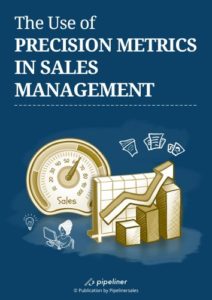In this, the next article on Account Management, let’s go into the details of fully understanding your accounts and what they mean.
To start with, I want to point out that account management cannot be done in separate or isolated areas of the company—it must be supported on a company-wide basis from the top down. In other words, it’s a team sport.
Account management often requires input from more than one department. For example, it might require input from Support, from Customer Service, or even from Development. That input is not physical, but digital through APIs, webhooks and other such methods (which we will cover in detail in the next chapter). If full support for account management isn’t coming from above, the departmental cross-functional support required won’t happen. But when it does, you can then create a real account management strategy.
Yes, it’s a team strategy, much like football. Too many companies treat sales as a single-person sport, such as golf. A golfer plays their own game, by themselves. But look at a fantastic football team, such as the Tampa Bay Buccaneers under Tom Brady. While Tom Brady is without question the greatest quarterback of all time, he could not have gone from the New England Patriots, whom he led to 6 Super Bowl titles, to also lead the Tampa Bay Buccaneers to a Super Bowl win, without the backup of a team. He doesn’t play the game by himself, as a golfer does. A game such as football lives by constant assists, whereas golf does not.
Input of Data Means Understanding
The team provides data so that account management can take place. That data will lead to an understanding of that account.
You may have heard of the Pareto Principle, which states that for many outcomes, roughly 80 percent of the consequences come from 20 percent of the causes. In sales, that means that 20 percent of a company’s customers generate 80 percent of the revenue.
To fully understand your account management, you need to have an understanding of this 20 percent of your customers who are generating 80 percent of your revenue. Are they equally the same? Are there differences? What are the similarities, if they exist?
To fully assist with this understanding, at Pipeliner we are creating an account management feature called White Space.
White Space Functionality
With this functionality, first of all, you can examine one of your “20 percent” customers. You can look at what kinds of products or services you have sold to them. You can also use filters to analyze the period of time you’re examining and numerous other factors.
You can utilize this data in a graph, and track how selling of a particular product or products has developed over time. You can also add in other products sold to that same customer, and compare the sales of one product against others to that customer.
Utilizing the filter, you can then add in other similar accounts—accounts with similar revenue, industry, or account class. You can then expand the graph, and compare this account to other accounts to whom you have sold the same products.
With this kind of visual detailed information, you can then begin to formulate real account management strategies.
Steps of Account Management
There are definite steps to account management. To begin with, your company is simply delivering a commodity to a specification. You then deliver good products and services. The next step would be beyond just product and service delivery to delivering good service and support.
The last two steps are the most important, and the ones which any company wants to reach in terms of account management. In the fourth step, you contribute to your company’s business issues. In the fifth step, you are contributing to their organizational issues.
In the moment you reach the fourth then the fifth step, you have a much higher standing with your customer company than if you were simply selling them product. And with your “20 percent” customers, these are the crucial levels that you want to reach. This is where you become very valuable to them, and they really need you.
Volume and Margin Classification
Customers can be classified into one of four quadrants of a matrix. The classifications begin at the bottom with low volume, low margin. Next comes low volume, high margin. Then would come high volume, low margin, and finally high volume high margin.
You know that your low volume, low margin customers are not part of the 20 percent that make 80 percent of your revenue. Neither, really, would those that earn low volume and high margin. Others could have high volume and low margin—but what you’re really after is high-volume high margin. You’re working to increase the high-volume low margin to a higher margin, and the low-volume high margin to a higher volume.
The question is, how do you do that? It doesn’t happen automatically—there are very definite steps you must take. You must create a strategy and an action plan.
Tools
Next, you must evaluate the tools you are using to reach this stage of the quadrant. Pipeliner’s White Space functionality provides a great deal of insight, which you need for your accounts. This insight must include the business needs of the customer. With this insight, you align your company’s needs with those of your customer and develop that action plan. That plan must involve all team members because, as we said, the salesperson cannot do it alone.
Finally, you must examine and analyze your prospect company’s stakeholders, which is done through Pipeliner’s Org Chart functionality as we covered in the last article. You need to fully understand who is “friend or foe” within your customer company. If you don’t fully know each stakeholder’s standing as regards your product, it will be very difficult to engage with that company.
Looking over this Org Chart, you can begin to figure out how you can bring this account from low volume low margin, low volume high margin or high volume low margin to high volume high margin. What can you offer them, and who precisely can you offer it to? You can’t simply call them up and say, “Hi there! I see here that you’re at a low volume but high margin with us—we earn good money with you. How can we increase that?” No, it needs real strategic planning. We’ll go deeper into what that takes in our next few articles.
Groundwork
But as you can see, isolating this data and analyzing it is the groundwork. You first figure out who your “20 percent” customers are. You then figure out what they’re buying from you compared to your other customers, and how they compare in other ways. You collect data from wherever you need to—LinkedIn, the web, or elsewhere. You look over your customer’s Org Chart and understand exactly who should be involved in expanding them. Once you’ve gained all of this insight, you start mapping out the strategy.
It could happen, of course, that you look everything over and realize you’ve already made as much revenue as you possibly can from this company. In that case, you won’t be pursuing them in the matter of expansion. That doesn’t mean you lose them as a customer, but they’re not a priority in the area of strategic account management.












Comments (3)
This is great information
Great account management tip. Very educative
Very educative article. Account management is very essential in an organization.